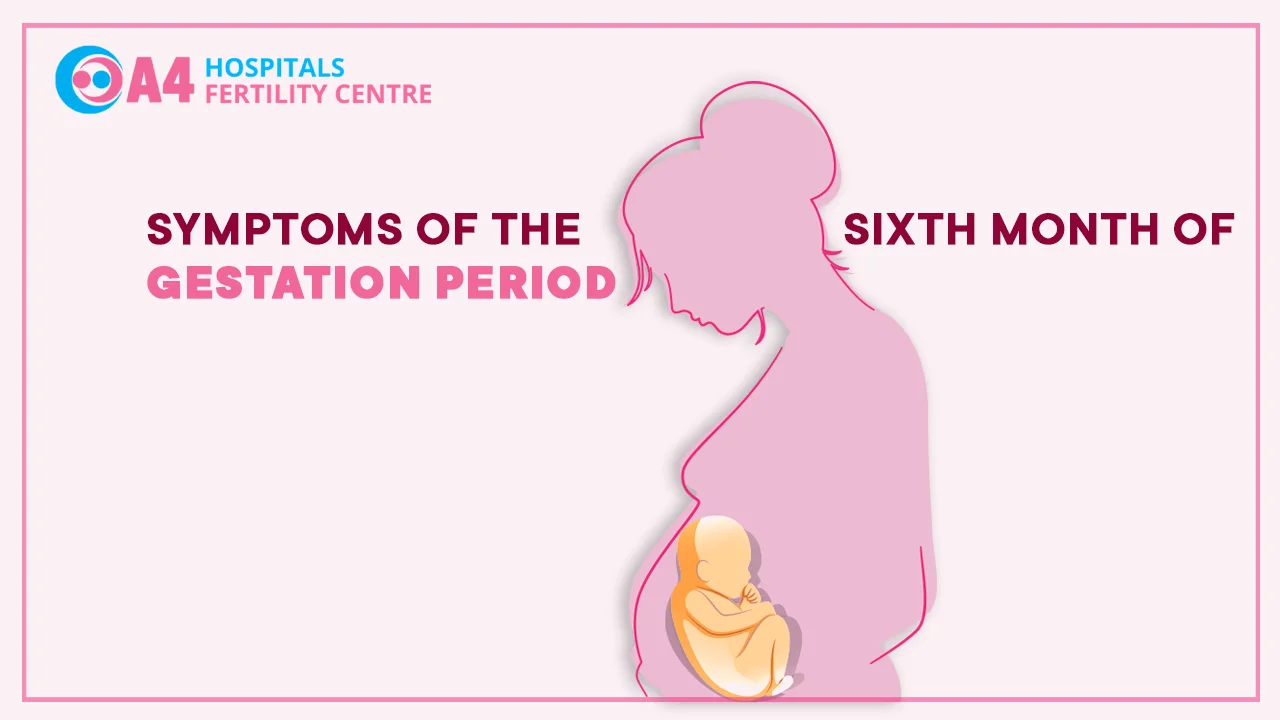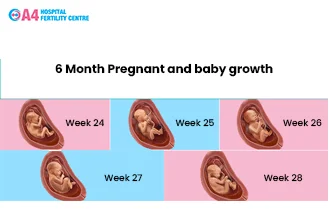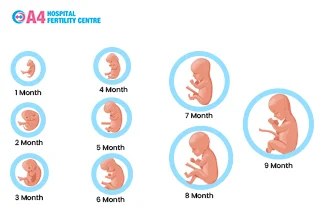
Dr. Aruna Ashok MBBS, MS OG, DNB OG
- Clinical Director

Pregnancy is an incredible journey that brings about numerous changes in a woman's body. As expectant mothers progress through each trimester, they encounter different symptoms that provide insights into their developing fetus. The sixth month of pregnancy, also known as the second trimester, is a crucial period marked by significant growth and transformation for both the baby and the mother. In this article, we will delve into the various symptoms experienced during this stage, shedding light on the physical and emotional changes that occur. The experience of a developing fetus can be compared to a caterpillar in a cocoon, emerging transformed into a butterfly - just as the fetus is gradually developing into a baby, full of life and potential. Let's just hope it's not a caterpillar that turns into a moth—that would be a real letdown!


By the sixth month, most women will start to show visible signs of pregnancy, as the baby bump becomes more pronounced. It is an exciting moment, as the abdomen expands to accommodate the growing uterus, which now sits just above the belly button. The visible baby bump not only brings joy to expectant mothers but also captures the attention and curiosity of those around them. It signifies the tangible proof of new life and serves as a reminder of the incredible journey underway. Of course it also serves as a source of endless jokes about cravings, mood swings, and sleep deprivation!
Unlike the fatigue often experienced during the first trimester, the second trimester brings a surge in energy for many expectant mothers. This welcome change allows women to feel more capable of engaging in activities and enjoying their daily routines without constant interruptions. The reduced exhaustion enables them to make the most of this vibrant period during pregnancy and embrace their heightened vitality.
One of the most eagerly anticipated milestones of the sixth month is feeling the baby move for the first time, a phenomenon known as quickening. Initially described as gentle flutters, these movements gradually become more pronounced and noticeable. Feeling the baby kick or roll inside the womb creates an extraordinary connection between the mother and the unborn child. These precious sensations often evoke overwhelming emotions and a sense of wonder, strengthening the bond between them.
Hormonal fluctuations during pregnancy can lead to significant changes in the skin. In the sixth month, many women experience what is often referred to as the "pregnancy glow." This radiant appearance stems from increased blood circulation, giving the skin a healthy, luminous quality. However, it is normal for some women to notice the emergence of stretch marks on the abdomen, breasts, thighs, and hips. As the skin stretches to accommodate the growing fetus, these marks serve as a reminder of the extraordinary transformation occurring within the body.
As the body prepares for breastfeeding, the breasts undergo changes during the sixth month of pregnancy. They may become larger, fuller, and more sensitive. The areolas, the pigmented area around the nipples, often darken, and small bumps known as Montgomery's tubercles become more prominent. These alterations are all signs that the body is progressively getting ready to nourish the newborn with breast milk. An expectant mother may find it helpful to learn about breastfeeding techniques and address any queries or concerns with a healthcare professional.
As the uterus expands during the sixth month, it puts pressure on the blood vessels, which can lead to leg cramps, particularly at night. These cramps can cause discomfort and disrupt sleep. Staying well-hydrated, engaging in gentle stretching exercises, and wearing comfortable shoes can help alleviate leg cramps. If the pain becomes severe or persistent, it is important to consult a healthcare provider for advice and guidance.
The increasing weight of the baby places strain on the back and pelvis, often resulting in backaches and pelvic pain. Maintaining good posture, wearing supportive footwear, and engaging in exercises specifically tailored for pregnancy, such as swimming or prenatal yoga, can provide some relief. Additionally, seeking massage therapy and taking warm baths may offer temporary comfort. It is crucial to communicate any persistent or severe pain to healthcare professionals for appropriate guidance and support.
Many women begin experiencing Braxton Hicks contractions during the sixth month of pregnancy. These contractions serve as practice for labor, helping the body prepare for the upcoming delivery. While Braxton Hicks contractions can feel like tightening in the abdomen, they are typically painless and irregular. Changing positions, staying well-hydrated, and practicing relaxation techniques can help alleviate any discomfort associated with these practice contractions.
Fluctuating hormones can cause nasal congestion during pregnancy. The lining of the nose may swell, leading to difficulties breathing through the nose and occasionally resulting in nosebleeds. Regulating indoor humidity, using saline nasal sprays to moisturize the nasal passages, and sleeping with an additional pillow to elevate the head can help alleviate these symptoms. However, it is essential to consult with a healthcare provider if nasal congestion becomes severe or persists for an extended period.
The sixth month of pregnancy brings forth a range of symptoms that signify the remarkable development occurring within a woman's body. From the visible baby bump to the magical sensation of feeling the baby's movements, expectant mothers witness miraculous changes on a daily basis. However, alongside these beautiful moments, women may also experience skin changes, leg cramps, backaches, and other discomforts. Understanding and embracing these symptoms can help expectant mothers navigate the sixth month with confidence and excitement, as they eagerly await the arrival of their bundle of joy. Remember to consult healthcare professionals for personalized guidance throughout this transformative journey.